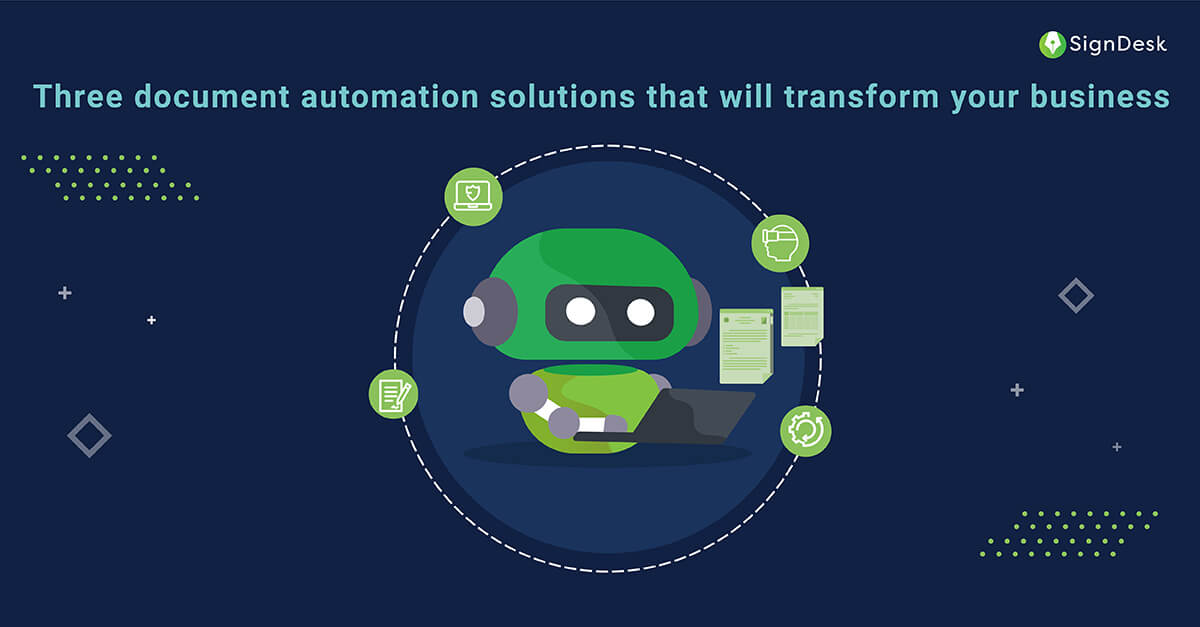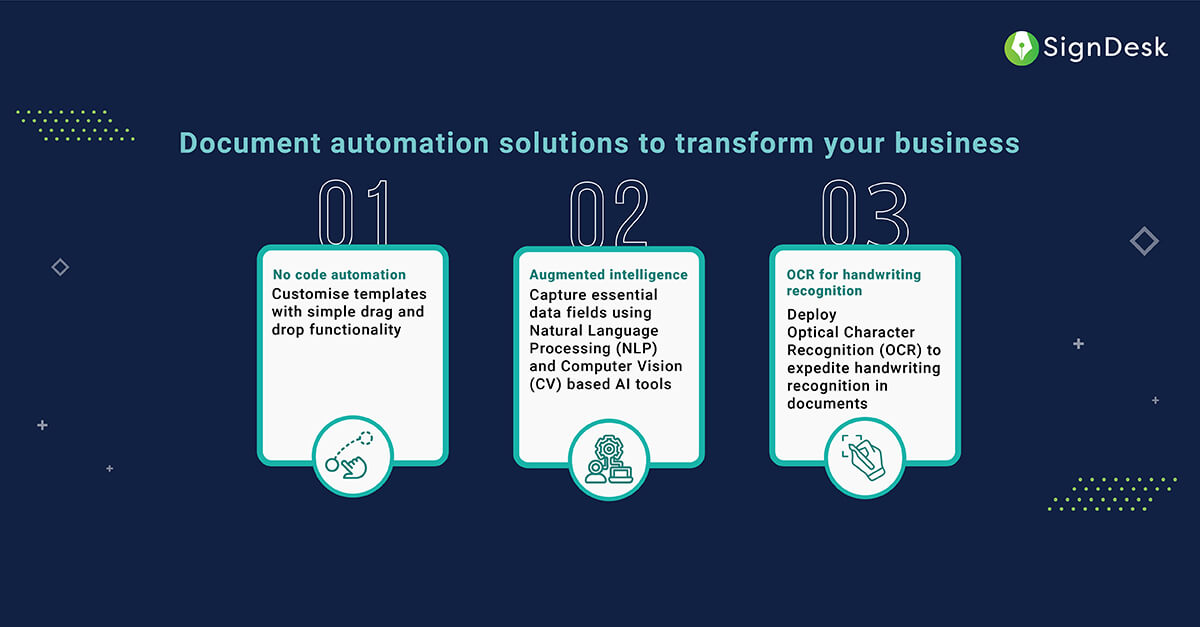Document Automation Solution For Business

An effective document automation system employs smart templates to smoothen the documentation lifecycle and generate highly accurate documents. It overcomes the challenges of high costs and time involved in maintaining paper-based documents. While document storage and retrieval become increasingly easy, employees can redirect their time to processes that generate value for the business.
For instance, retail, BFSI, education, healthcare, and real estate industries, which rely heavily on meticulous documentation, stand to gain immensely by employing a document automation system.
As technology helps enterprises to conveniently adopt document automation, it is important to understand the new advancements in this space.
Here are three of them businesses must know:

-
No code automation that simplifies documentation
With conventional document automation systems, businesses are dependent on IT teams to configure the solution in accordance with the organization’s IT architecture. This leads to delays in integration, thereby defeating the whole purpose of automation. New-age documentation solutions overcome this challenge by giving the power of automation to the users themselves. They allow executives to customize their templates through simple drag and drop functionality, allowing them to meet their unique business requirements. This delivers significant benefits as documentation systems are ready for use right out of the box and can be deployed in a matter of minutes.
-
Augmented Intelligence goes mainstream
Augmented Intelligence is the use of self-learning systems backed by machine learning leaving the final decisions to humans. As it goes mainstream, Augmented Intelligence’s underlying technologies – Natural Language Processing (NLP), artificial intelligence that enables computers to understand and respond to text just like humans, and Computer Vision (CV), artificial intelligence that enables computers to ‘see’ by reading and responding to visual inputs like text or images – become more accessible to enterprises.
Here’s how it can be applied in the healthcare industry: Before enrolling a patient, executives have to process multiple paper-based documents such as identity proofs, past health records, and prescriptions, to name a few. With Augmented Intelligence-based solutions, these documents can be uploaded to the automation system. Typically, these systems use Computer Vision to capture the essential fields and then use Natural Language Processing to create relevant documents such as admission forms and invoices.
PwC estimates that implementing such a solution could save a business 2,000 hours for every 100,000 pages processed. Thus, the integration of a document automation system makes operations quick, accurate, and cost-efficient.
-
Deploying OCR to expedite handwriting recognition
Consider the routine tasks of an insurance claim executive: she has to read doctors’ handwritten prescriptions, examine hand-filled claim forms, and verify medicine invoices. She then fills relevant details from these documents into her processing system before forwarding them to managers. These activities consume significant hours, are prone to errors and, because of the challenges involved in handwriting recognition, could not be delegated to a documentation system. However, Optical Character Recognition (OCR) technology has undergone a transformation with the help of Artificial Intelligence. Today, document automation systems employ AI-backed OCR that makes handwriting recognition efficient, thereby saving time and costs and rendering accurate information throughout the workflow.
As companies across the board aim to go paperless, they must consider emerging technology trends to upgrade their documentation process. New-age, AI-based documentation systems, such as one offered by SignDesk, capture all the operational and automation needs of businesses, thus overcoming their existing inefficiencies and challenges. This is the opportune moment for businesses to embrace document automation solutions to streamline workflows and gain a competitive advantage.